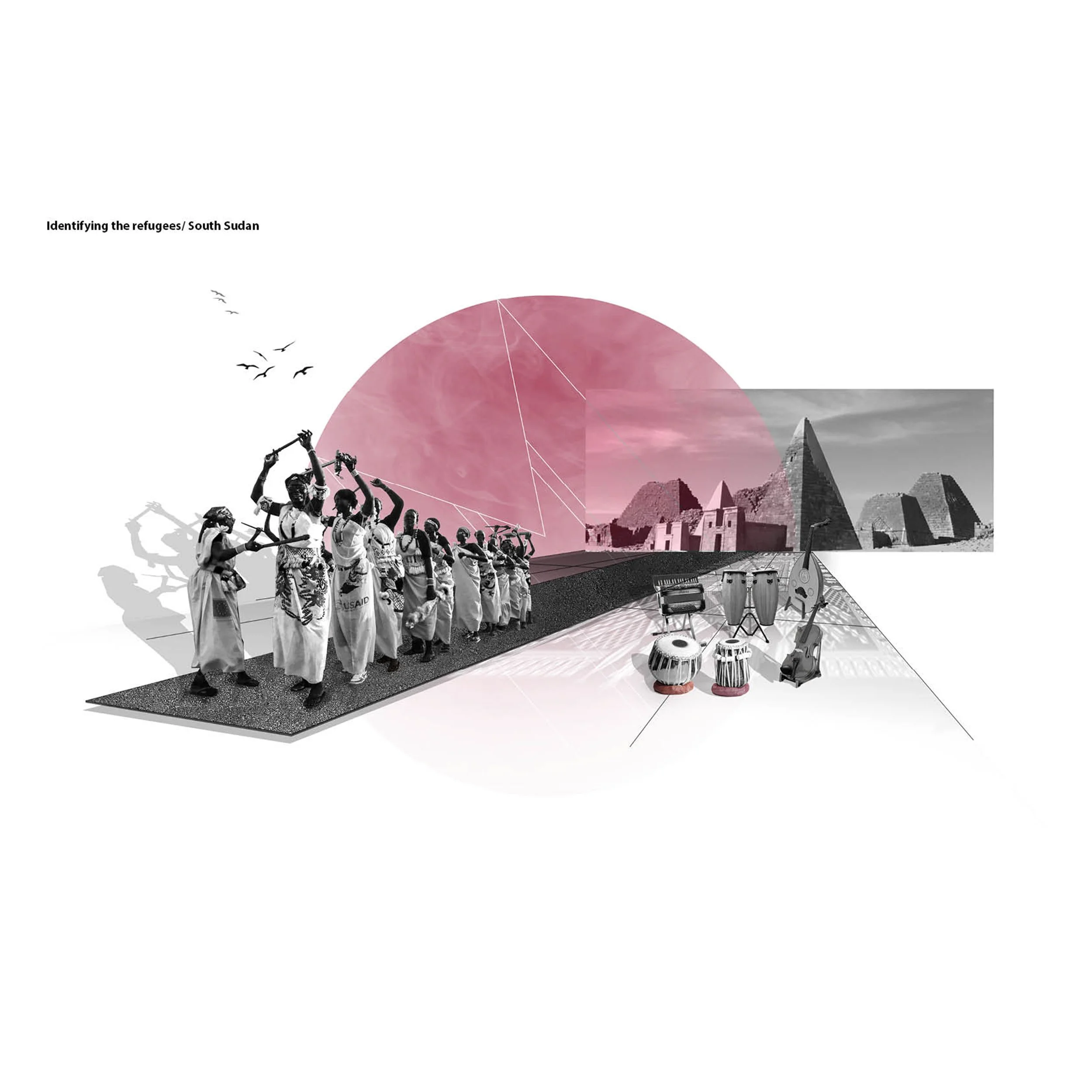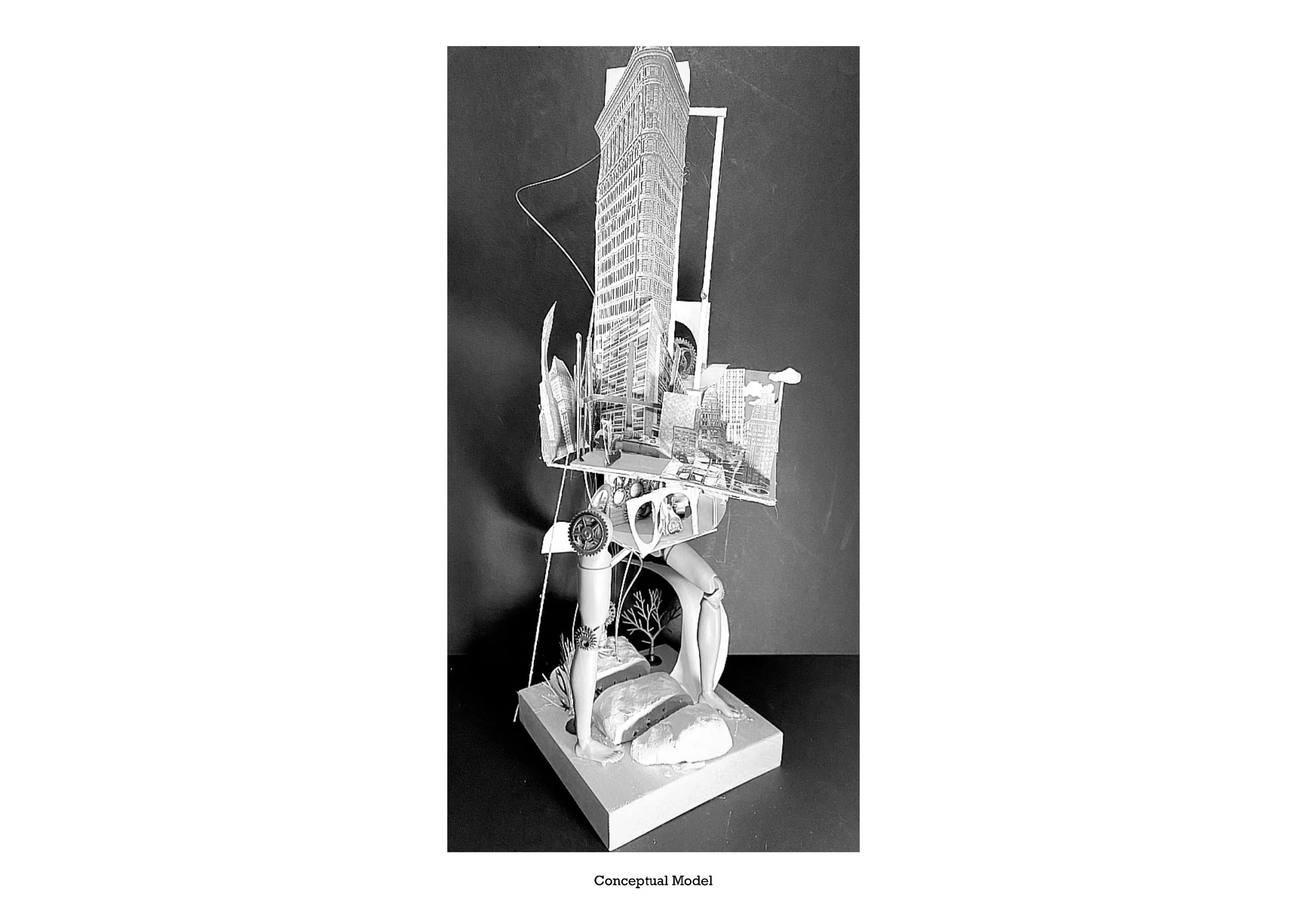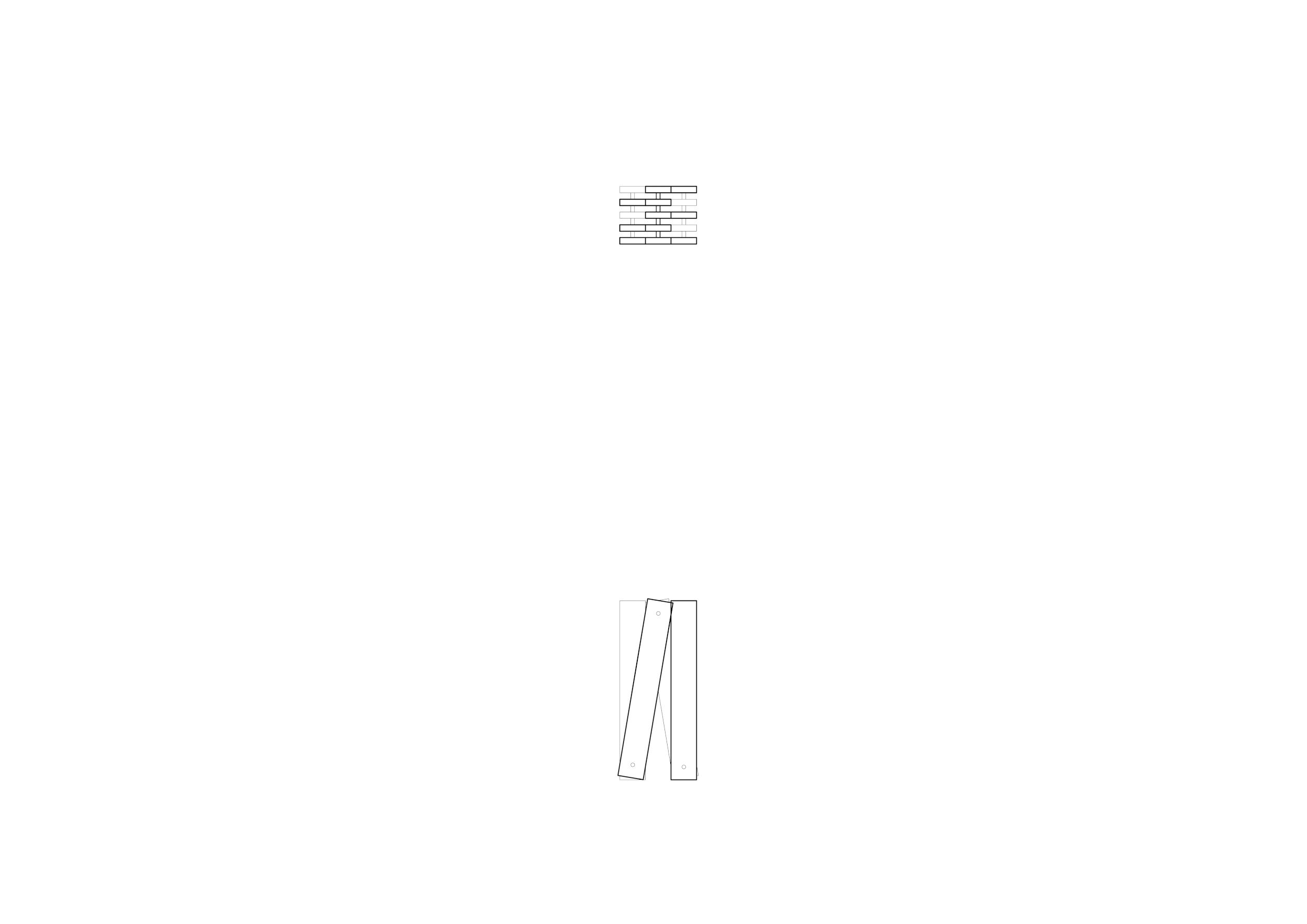PART 1
2022
YEAR 3
This year marked the end of compulsary Covid lockdowns. As a result, there has been an evident shift in our daily rituals, working patterns and culture which have started to redefine our cities. Studio Five has directly responded to this concern by examining the future of existing office blocks in central Leeds, as Studio Three offers novel solutions to rebuilding our cultural heritage following the pandemic. Studios One, Two, and Four all investigate the regeneration of neglected and abandoned sites, exploring the complexities and impact of how to deal with the built fabric of our existing cities as standard patterns of living and working have been disrupted.
STUDIO ONE: Abstract Machine
STUDIO ONE: Abstract Machine
The studio projects were based in the Liverpool Ropeworks area exploring the following propositional themes:
· Research into the cultural manifestations of ‘Guilds’ with students critically defining their own position.
· Exploration the spatial systems through which guild organisations could manifest themselves.
· Exploration and engagement in a dialogue with a defined urban context
· Exploration of how an architectural language. can represent the ideals and values of the defined organisation within a particular culture.
· Exploration of sustainable methodologies.
Staff
Keith Andrews
Students
Adil Akhtar
Thea Bathurst
Adam Hedge
Ali Kacar
Emily King
Jake Lord
Victor Magalhaes
Muhammad Malik
Karina Orizarova
Jasmine Osborn
Waly Prado
Amir Saghir
Jacob Shipp


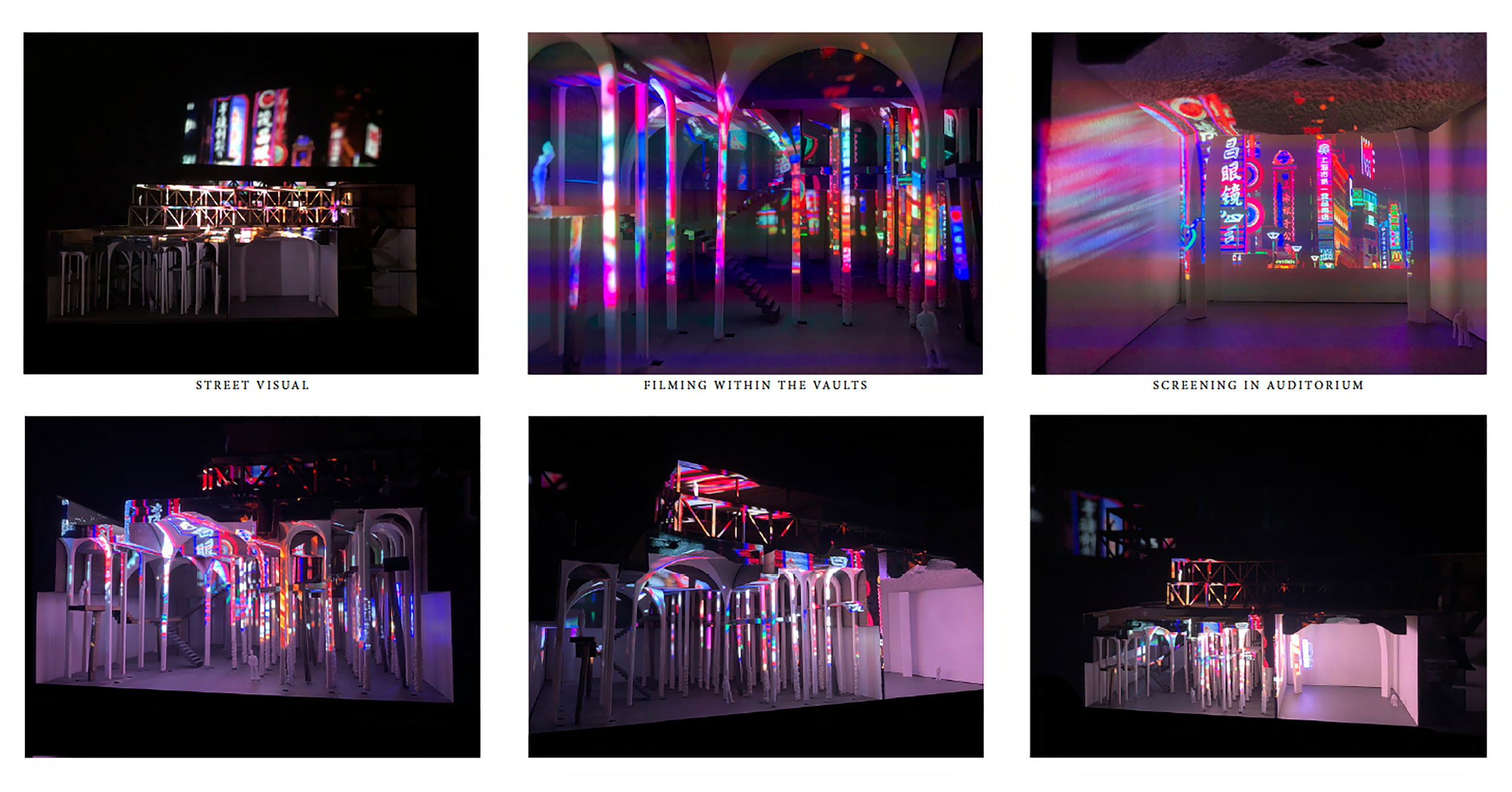



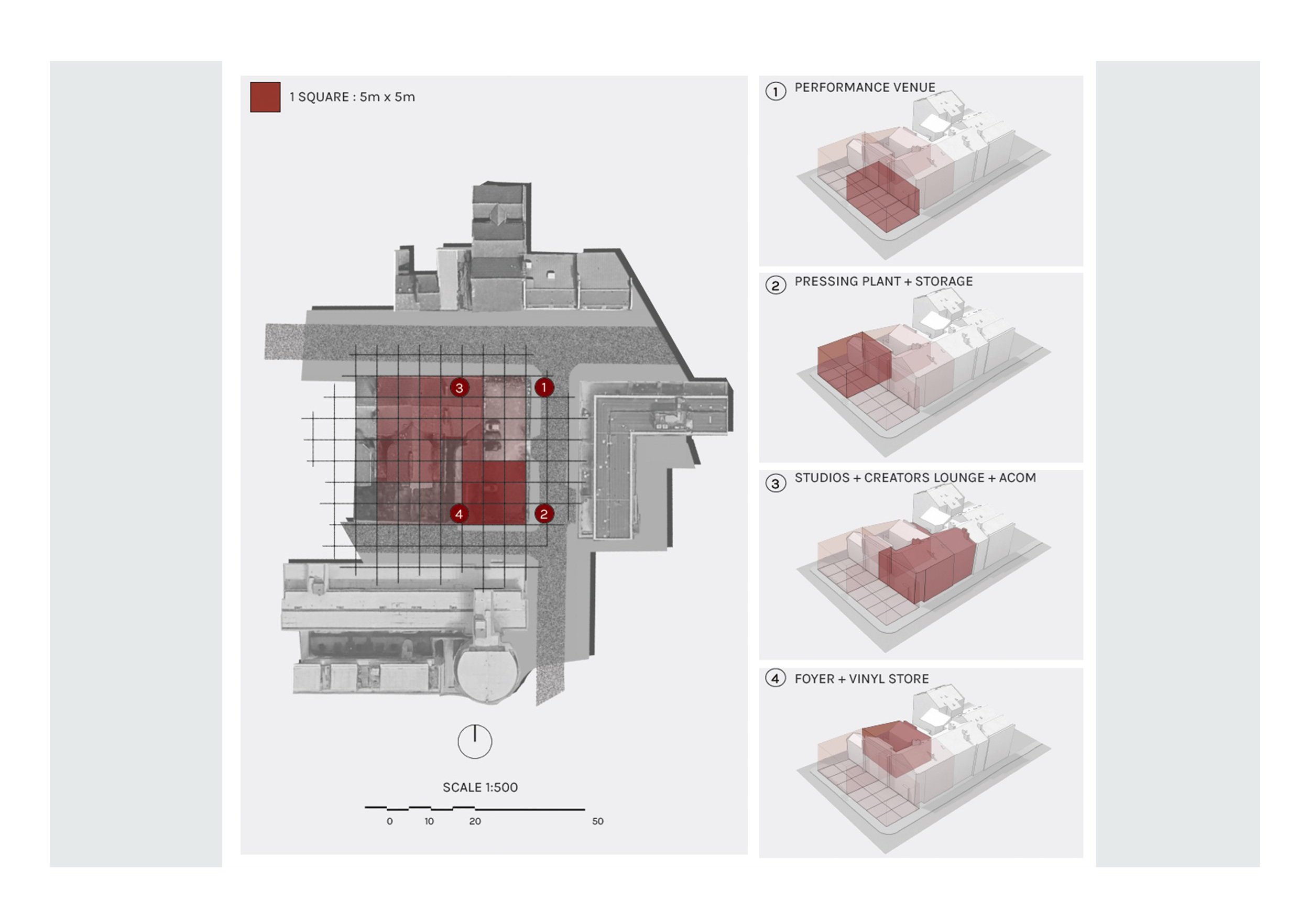

STUDIO TWO: The Mills of Marsden
STUDIO TWO: The Mills of Marsden
This studio asks what should we do with dilapidated, old buildings in our towns. Specifically we have looked at a large collection of mills in the town of Marsden, West Yorkshire.
There is not an easy answer to this question; in the recent years Historic England has begun to show a far more practical approach to the refurbishment of heritage buildings, understanding that change is necessary to avoid an alternative of dereliction and ruin. Here is a niche where the skill and judgement of the Architect can add huge value to society.
The UK is targeting bringing all carbon emissions to net zero in 2050. The Green Building Council suggests that 80% of 2050s buildings have already been built, so a major priority should be decarbonising existing stock. This is a reasonably simple exercise for a building of little local value where wholesale charges to its external nature will not be culturally resisted. But what do we do with buildings that carry significant heritage value? Should they be fundamentally changed; wiping out their history? Or should they be sensitively tinkered with, even if this doesn’t decrease their operational energy load? Should they be left to rot as relics of an overly romanticised bygone era?
These buildings frequently do not meet modern standards, they are riddled with asbestos, they leak and are perceived to be hard to repurpose and, when combined with the fact that the building apparatus in the UK is very risk adverse, these grand buildings are all too often razed to the ground or simply left indefinitely to deteriorate. This studio is about providing alternatives to this outdated approach: students have been forced to make judgement calls on where the value of this existing building stock lies and how best to unlock this for future generations without destroying the planet.
Staff
Tom Vigar
Students
Mohammed Amaad
Phetnarin Chumsook
Fraser Harkness
Reece Harrison
Areeba Hussain
Furkan Khan
Lauren Lee
Natalia Mata
Alexander McKenzie
Patrick Roobottom
Thomas Starling
Timothy West
Zoe West
Frazer Wright
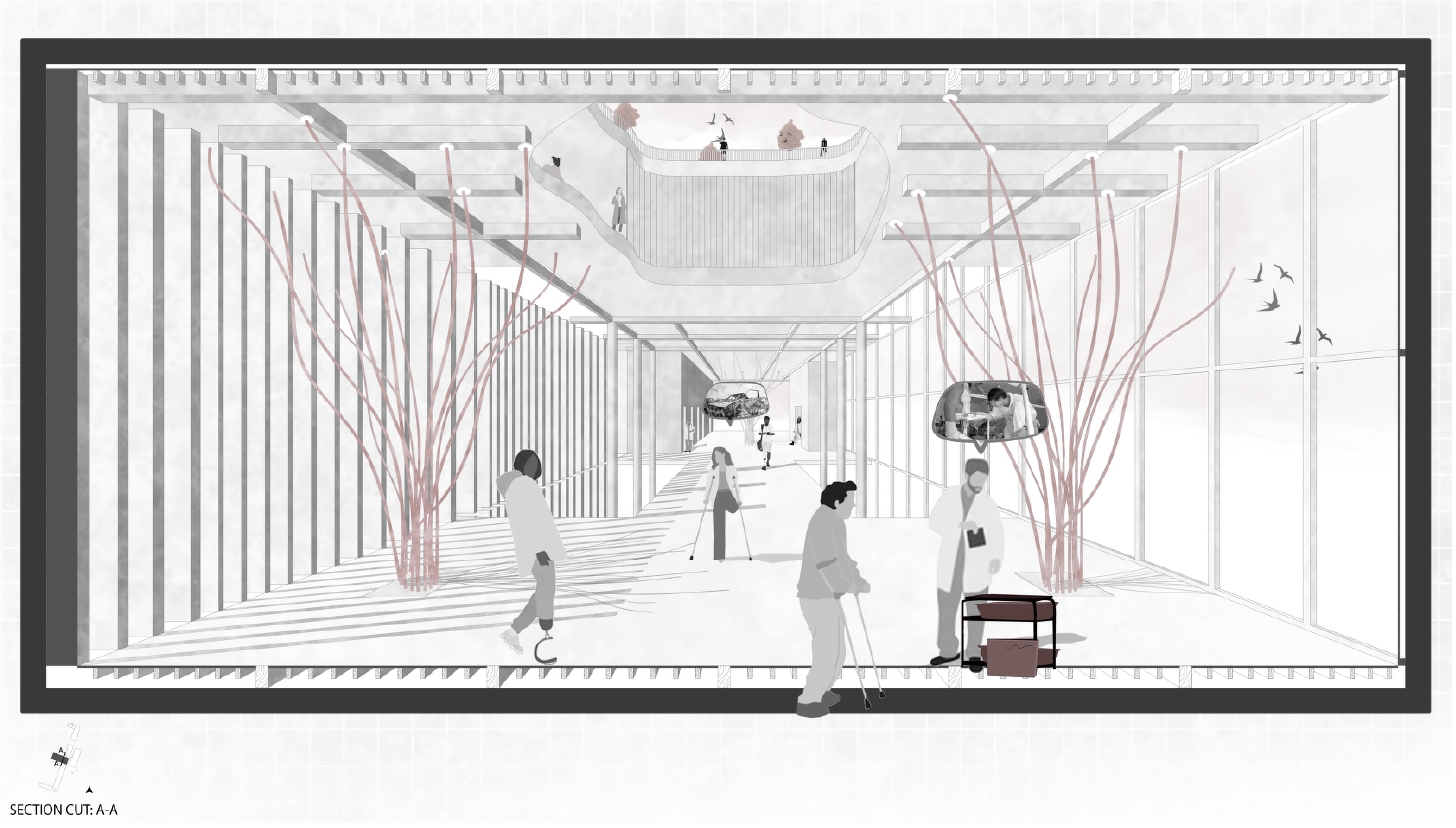
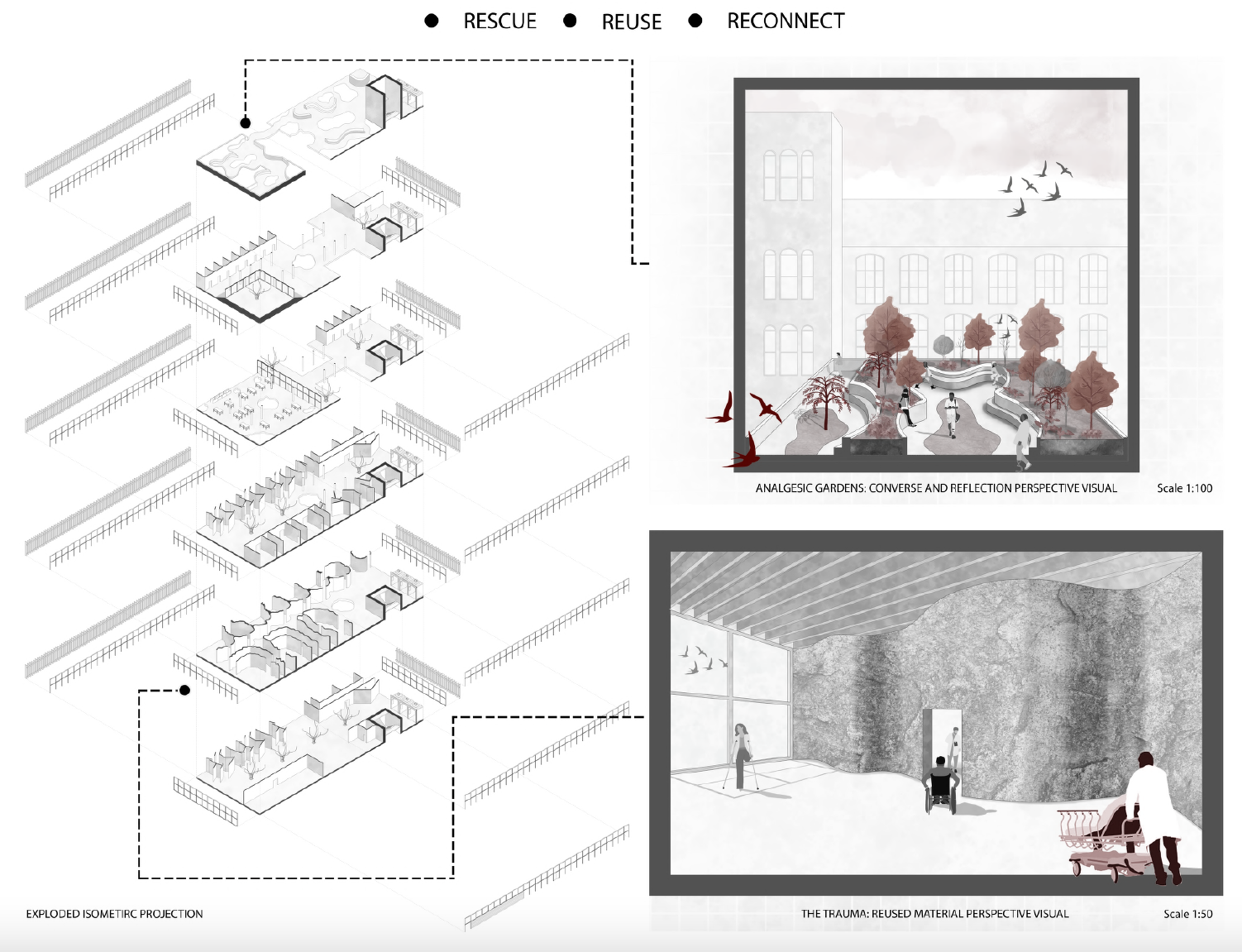











STUDIO THREE: Culture Future?
STUDIO THREE: Culture Future?
The greater danger for most of us lies not in setting our aim too high and falling short; but in setting our aim too low, and achieving our mark.
Michelangelo
Experiences of Leeds have been somewhat detached as a result of Covid. Its impact has meant that the habits of both inhabitants and visitors have shifted, and as we re-emerge to make contact with the fabric of the city there are opportunities to examine new types of engagement and development. Whilst in lockdown preparations for Leeds 2023 have been underway, with events scheduled to reinvigorate the city and communities within it. With a focus on culture however we question whether the temporary nature of some 2023 events omits opportunities to meaningfully regenerate the city in the long term. The studio questions ‘Is culture enough?’ and has set about to identify opportunities and posit alternative intersections that contribute to regenerating the city.
Staff
Claire Hannibal
Students
Jabir Abadin
Subhan Ahmed
Luke Bonnell
Benjamin Holmes
Rebecca Hurford
Alicea Kenyon
Aivis Kurtiss
Helton Lourenco
Kline Okafor
Nicole Oliver
Matthew Towey





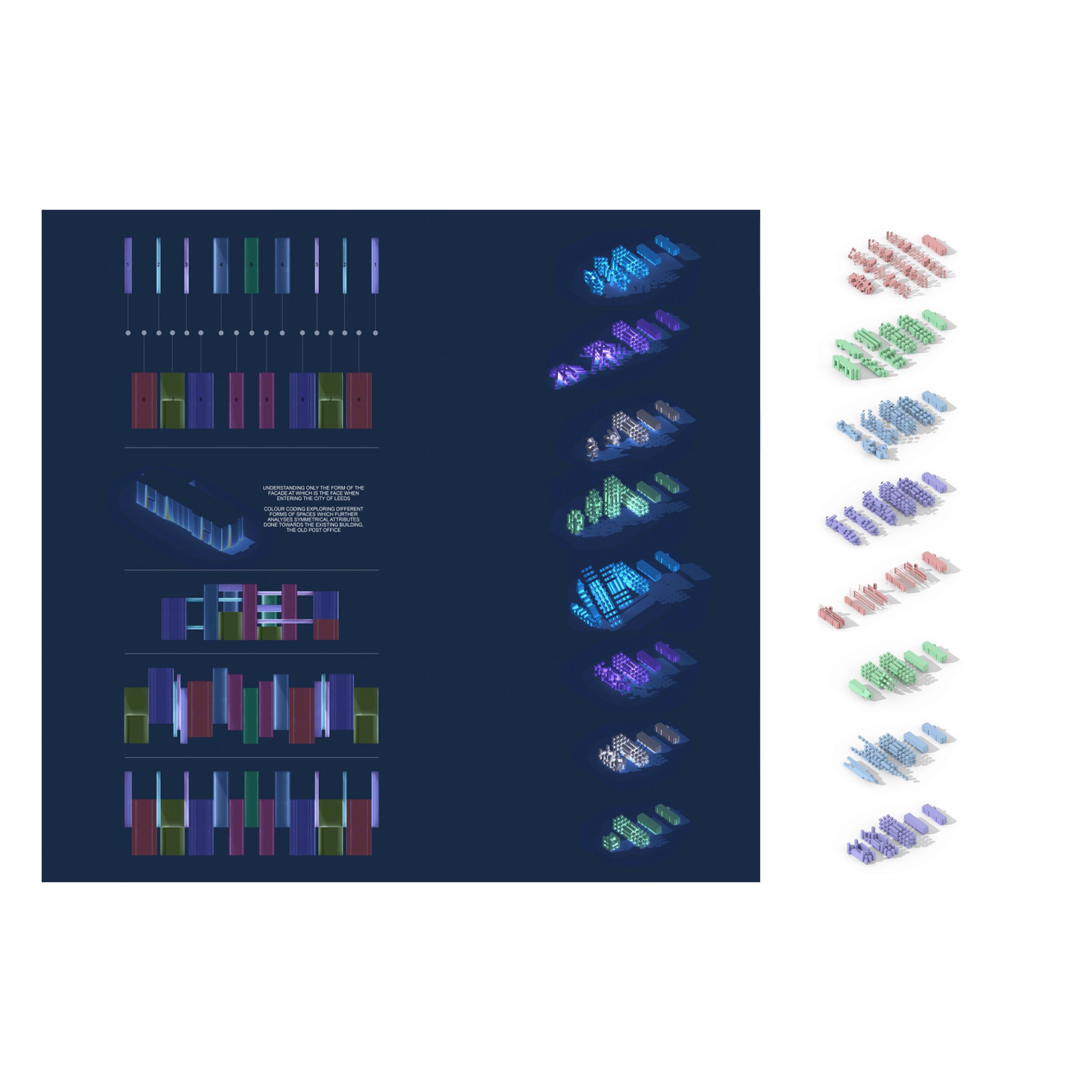


STUDIO FOUR: Mend + Repair
STUDIO FOUR: Mend + Repair
‘One scratch is called damage. A thousand scratches is called patina. The idea of repair is virtually invisible in contemporary architectural practice and completely absent from critical discourse, yet ironically it is the very process which sustains the discipline and leaves traces of human existence.’ Tom Emerson
Mend + Repair as an architectural proposition seeks to become a critical strategy in how we redefine elements our cities. The structures within our cities are often bordered by remnant vegetation or slithers of awkward left over space by developers, clearly defining thresholds of ownership. Mend + Repair is an approach that actively engages with the existing city fabric. In particular, we have been investigating how one appropriately responds to those things which have gone before and trying to form an
understanding about how our decisions are continual responses to the ‘existing’. Our role, as caretakers of the city looks to provide an ambitious solution to creatively repair everyday inconsistencies, to respond to both historical and current narratives, and to explore how we can re-define the relationship between existing and proposed.
From exploring the role of ‘making’ as a tool for investigation, such as handmade field recording devices, we looked at how our role as architectural craftsmen can have the potential to transform the everyday, to argue narratives of privatisation, challenge the commodification of space, and to negotiate the blurred boundaries between public/private. The process also challenges our own notion about what the city actually is, or could be.
The studio is distinct in its search for analogue ways of representing information; experimenting with processes that leave our traces imprinted onto each stage of the process. Through making and curation - we have explored design as a consequence; an interconnected sequence of additions over time. Students have worked in the peripheries between film, print, casting, projection and drawing. The projects in this exhibition seek to rethink, reframe and redraw spatial concerns that lie in the space between the existing, retained and proposed - exploring the interlinking nature between the built and human traces.
Staff
Ashley Caruso
Students
Jack Aldworth
Curtis Black
Anotida Choto
Joe Downing
Olivia Fawcett
Katie Fleming
Louis Gross
Norhan Hassan
Sayyam Majid
Roukan Moustafa
Katherine Payne
Lucy Simms
Calvin Tai

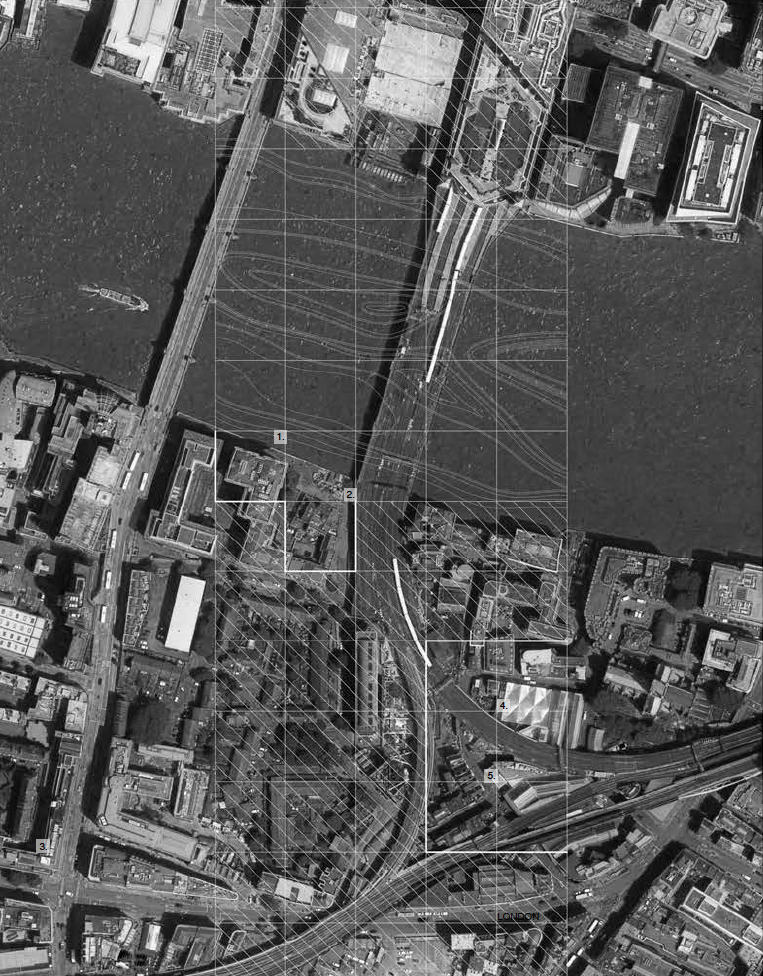











STUDIO FIVE: "I Want to Break Free" - Rethinking the Office
STUDIO FIVE: "I Want to Break Free" - Rethinking the Office
On July 19, 2021, Boris Jonhson declared “Freedom Day”. After one and a half years of the pandemic, everyone could not wait to be set free from social isolation. Yet, as reported by several media outlets, people offered a full-time job that demanded a full-week presence at the office were mostly rejecting it. It seemed that the working-from-home model was here to stay, with more and more vacant office space becoming available in cities. Although many architects have pointed to these vacant office spaces as the great opportunity to tackle the current housing crisis in the UK, many attempts to regenerate office spaces up to date have been problematic. Appropriated by market agents, such regenerations end up in small and insufficient affordable housing or in luxury apartments addressed for rentals and high-end clients. In this sense, our studio aims at rethinking the office and its problematics. How could the regeneration of these spaces take place? How can these architectures incorporate change?
Whether understood as a Central Business District, an Office Park or a Creative District, our studio will propose that these spaces could also be thought of as urban form, as pieces of architecture able to propose new ideas for the project of the city. In this sense, this design studio looks to promote the creation of new imaginaries and scenarios that are able to critically reflect on the new condition of work and how it could relate to life and leisure in a post-COVID environment.
Staff
María Álvarez García
Students
Aseel Al Dighaishi
Rahaf Ashour
Georgia Bustin
Chania Coombs
Benjamin Flannery
Anna Hague
James Higgins
Justin Missick
Shannon O'Donnell
Izabela-Timea Orghidan
Willfran Feumba Yopa








YEAR 2
Themes of community, exchange, and interaction were are the core of modules this year. Second year is a testing ground, a place to experiment with new processes, refine skills, and harnesses space to be bold in architectural ambition.
DESIGN STUDIO
DESIGN STUDIO
Semester 1 – The Makers Space
In semester 1 all BA2 students created a Makers Space to support East Leeds Project, a visual arts organisation based in Gipton. Working with art as a social action, students were tasked with exploring the varied forms offered by the expanded field of contemporary art as a collaborative, collective and participatory social method for bringing about real-world instances of progressive justice, community building and transformation.
The maker movement is unlike any other in that it is focused on an epicenter where making and physical fabrication collide. The movement revolves around access to new tools, skills, technology and reinvention to help re-imagine how the future of physical objects can be improved. The movement has potential to reinvent local communities, manufacturing industries and employment economy.
Students each identified a ‘Maker’ from the six primary means of making: innovation, collaboration, workspace, exchange, fabrication, and distribution, and through researching their needs and requirements designed an amazing array of potential spaces to help people in local communities to have access to a place to work through new ideas with others towards building a better future and community.
Semester 2
In semester 2 BA2 students chose one of four exciting studio options which included:
The Rise of The Anthropogenic Machine, where students argued humanity needs to urgently rethink what it means to be human. They proposed new ideas, new narratives and new stories, a new conceptual understanding of our reality, and a new relationship between our traditions of human culture and our environment in order to adapt and survive in the face of apocalyptic global climate breakdown.
Film – Architecture – Fold, where students explored the intangible, lost and in-between narrative spaces through contrasting Leeds and Liverpool. Using film and photography to extend studies of the interstitial spaces that exist upon and between boundary, threshold, connection of internal-external, spatial volumes, real and abstracted modalities and events, students promoted a sense of awareness, and accelerated motifs that combined to imbue a sense of reality, immersion, and temporary hypnosis.
Migration in Waste Age, where students considered what is ‘home’ in the face of dramatic changes of forced human migration through climate or conflict. By exploring questions such as; What the idea of a connection to a space or place? What is identity and is it fixed to one place or space? Students developed a narrative and story to understand how the needs of these individuals, families and children be met, beyond their basic right to have a shelter, food and protection.
The Arthouse by CITYzen Agency, where students explored the neglected places of Scarborough’s post-industrial heritage as an architecture live project with visual arts charity Scarco Arts. Taking advantage of Scarborough’s recent cultural Renaissance where people have been drawn to the town for the light, large skies, and dark sea, the students considered global imperatives and local issues together, exploring their interconnection and consequence of each on the other to propose idiosyncratic contemporary art campus’.
Staff
Craig Stott
Ian Fletcher
Mani Lall
Anna Pepe
Rozita Rahman
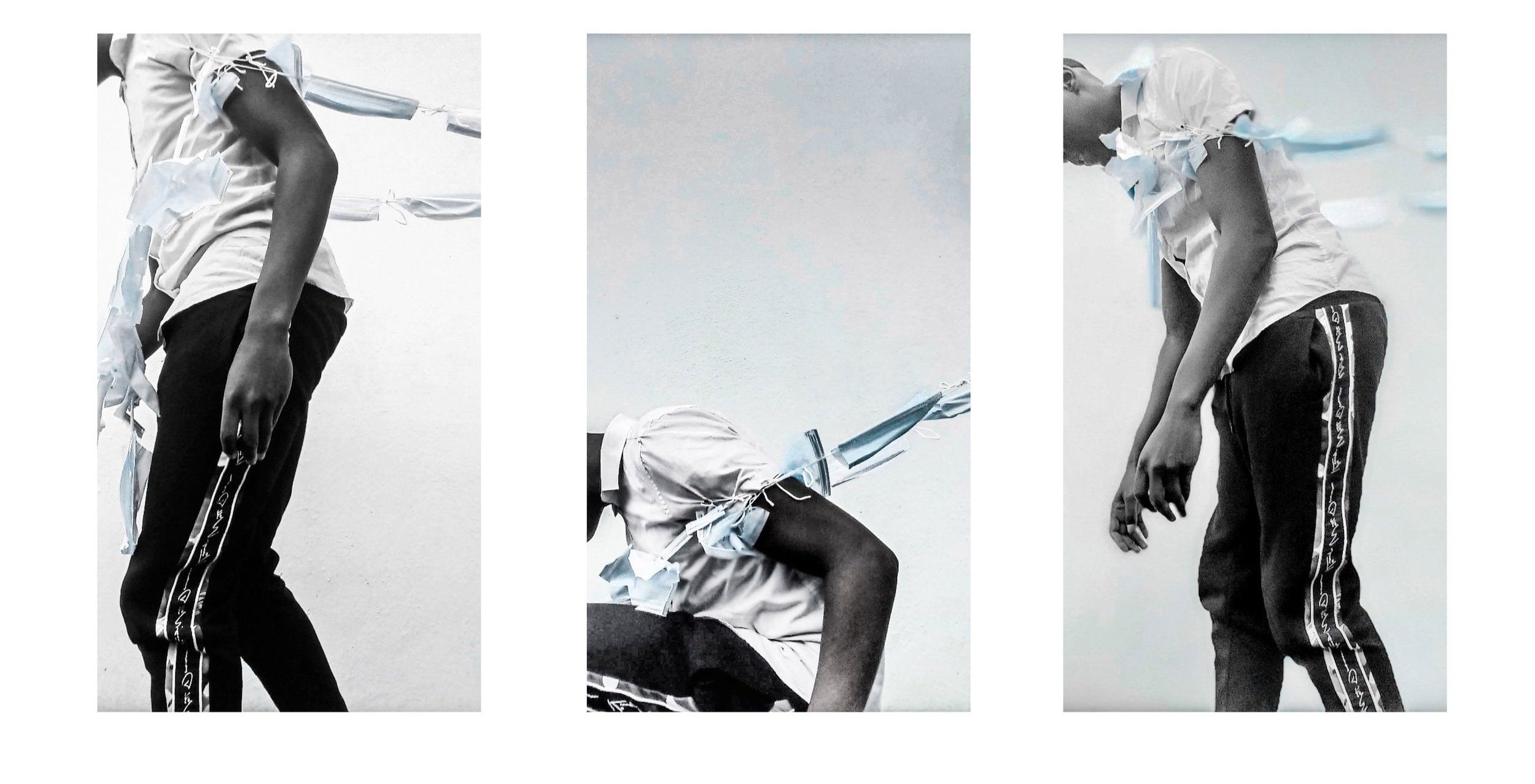
YEAR 1
The first year is a creative opportunity to question what we consider spatial elements to be. Public Space Practices is the core theme for the year, allowing students to experiment and propose inventive solutions at various scales. From individual body scale to complexities of urban scale, students test ideas through making, drawing, iteration and critique.
DESIGN STUDIO
DESIGN STUDIO
SENSING ARCHITECTURE aims to explore the role of the body as one of the most important points of reference for design disciplines: from the ideas of measure and proportions to the concept of perception, the human body affects and is affected by the space that surrounds it. Students learn about the importance of drawing, the value of senses and proportions, and the crucial meaning of space and embodiment.
PLAYING THE CITY – FOR A CINEMATIC URBAN SPACE supports students in understanding the urban context through cinematic techniques, analysing the experiential potentialities of a town, and finally designing an experimental public playground as a device to support people in reclaiming urban places.
WASTEAGE aims to initiate students to the ongoing debate on the global environmental emergency and wider sustainability context by encouraging a thorough investigation of one aspect of it: waste pollution. It provides them with essential sustainability literacy from a designer’s perspective and an opportunity to nurture their sense of duty towards the environment and communities while practicing the skills and competencies required in architectural education. At the same time a call for socio-environmental action and an academic exercise in zero-waste design at the scale of both the human body and the city, it encourages students to engage with a variety of design tasks, such as: the production of succinct and compelling visual content intended for the social media platforms as a form of denounce, to bring attention to waste pollution and raise awareness among the wider public; the design of an artefact or art piece, conceived as an experiment in zero-waste design with focus on the re-imagining of waste material, often in relation to a ‘circular economy’ model and the idea of 'designing for deconstruction'; and, finally, the proposal of a public space intervention that explores the application of zero-waste or ‘circular economy’ or other relevant design principles to the architectural scale and the socio-environmental, physical context of the city.
Staff
Anna Pepe
Carla Molinari
Mohamad Hafeda
Josephine Lintonbon
Will McMahon
Jake Parkin
Alex Vafeiadi


